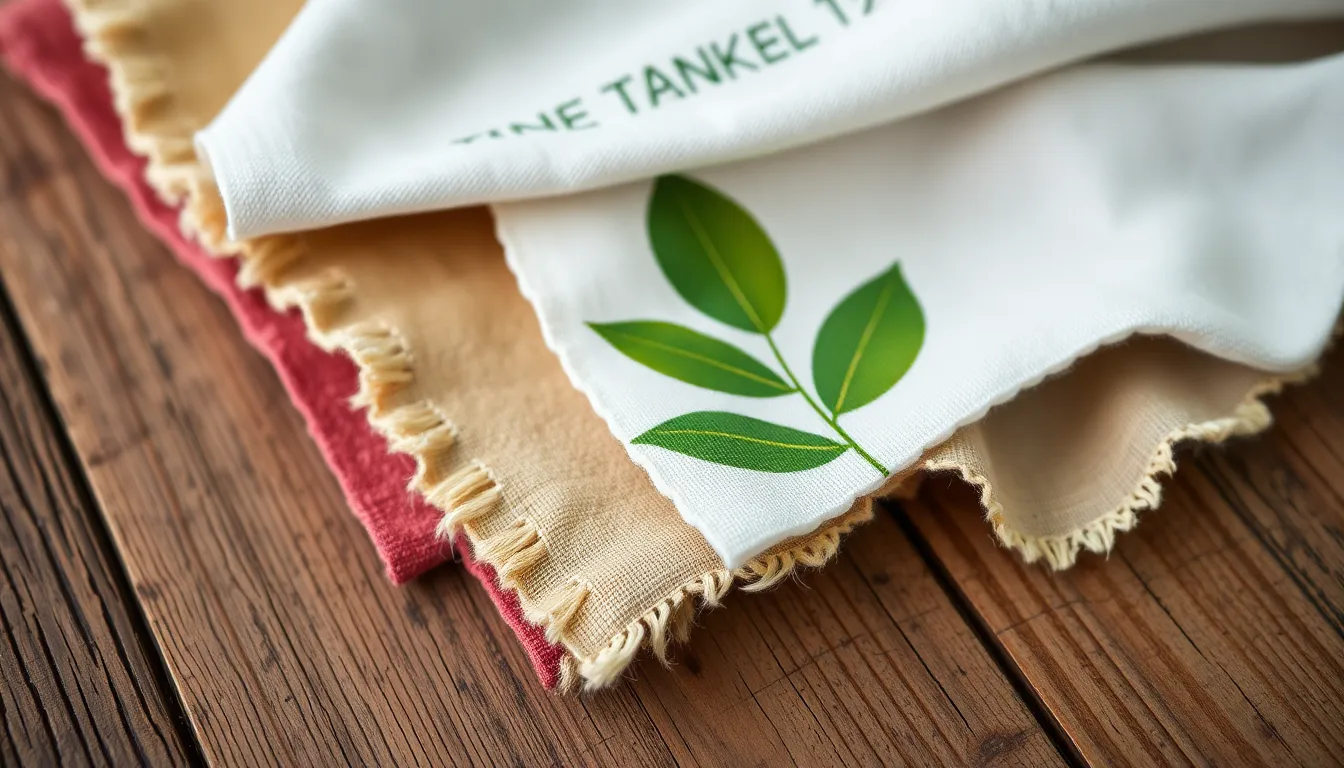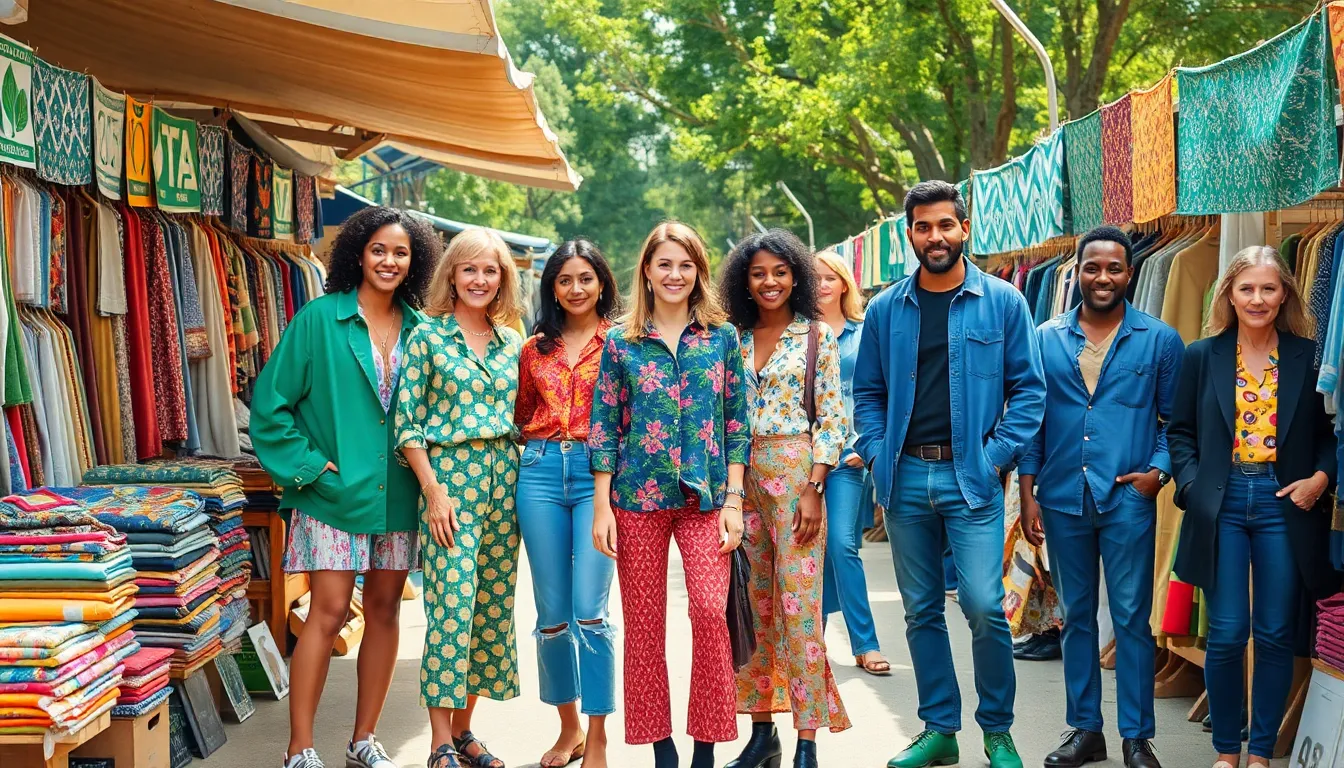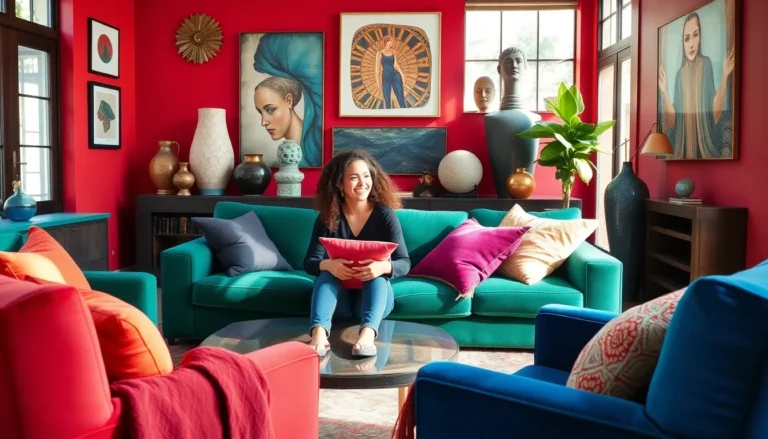Table of Contents
ToggleIn the ever-evolving world of fashion, textile trends are the unsung heroes that can make or break a collection. Imagine walking into a room and feeling the fabric whispering sweet nothings about comfort and style. Whether it’s the resurgence of retro patterns or the rise of eco-friendly materials, textiles are shaping the way we express ourselves.
Overview of Textile Trends
Textile trends significantly impact the fashion industry. Fabrics play a crucial role in defining collections and influencing consumer choices. Recent trends showcase a powerful inclination toward sustainable and eco-friendly materials. Designers frequently incorporate organic cottons and recycled polyester to promote environmental responsibility.
Bold colors and vibrant prints are making a comeback, reflecting a desire for self-expression. Retro patterns, including geometric shapes and florals from past decades, dominate runway presentations. Natural textures are also prevalent, with linen and hemp gaining traction in contemporary designs.
Inclusivity in textiles is a highlight, emphasizing adaptive clothing made from versatile materials. This shift addresses the needs of diverse body types and offers comfort to all consumers. Moreover, smart textiles equipped with technology are emerging, transforming the interaction between fabric and user.
Fashion brands increasingly focus on storytelling through textiles. Each collection tells a narrative, connecting the wearer to broader themes of identity and culture. Collaboration between artists and textile manufacturers leads to innovative patterns and textures, enhancing the overall aesthetic appeal.
Seasonal palettes are leaning toward earth tones, reflecting a connection to nature. Color trends include warm browns, muted greens, and soft blues, fostering a calming effect. The use of innovative dyeing techniques contributes to resource-saving practices.
Overall, these textile trends embody the dynamic relationships between fashion, functionality, and sustainability. By embracing these directions, the industry continues to evolve, responding to both market demands and consumer values.
Sustainable Textiles

Sustainable textiles play a crucial role in shaping the future of fashion. These materials meet consumer demand for environmentally conscious choices.
Eco-Friendly Materials
Eco-friendly materials like organic cotton and Tencel provide alternatives to traditional fabrics. Organic cotton farming avoids harmful pesticides and synthetic fertilizers. Tencel, made from sustainably sourced wood pulp, features biodegradable properties. Sustainable wool and hemp also gain popularity due to their minimal impact on the environment. Many brands now incorporate these fabrics, aligning their collections with eco-conscious values. The rise of eco-friendly textiles reflects a profound shift towards sustainability, addressing consumer demands for responsible fashion.
Recycling and Upcycling
Recycling and upcycling transform waste into valuable resources within the textile industry. Brands increasingly prioritize recycled polyester made from discarded plastics. Upcycling encourages creativity, turning old garments into new designs. This process reduces waste and slows down the fashion cycle by extending garment lifespan. The impact includes less textile waste ending up in landfills, promoting a circular economy. Innovative companies showcase how recycling and upcycling drive sustainability while offering unique products. These practices highlight the importance of resourcefulness in modern textile trends.
Technological Innovations
Technological innovations are reshaping textile trends, offering exciting possibilities for the fashion industry. Smart fabrics and advanced digital printing techniques stand out as key developments.
Smart Fabrics
Smart fabrics incorporate technology to enhance functionality and user experience. These textiles often include sensors that monitor vital signs or adjust temperature, providing users with comfort and convenience. Brands are integrating fabrics that respond to environmental changes, creating clothing that adapts to various conditions. This innovation allows for the combination of performance and style in everyday wear.
Digital Printing Techniques
Digital printing techniques have revolutionized fabric design by enabling intricate patterns and vibrant colors. This method minimizes waste by using only the necessary amount of dye, promoting sustainability. Designers can produce customized prints quickly, catering to individual consumer preferences. As a result, digital printing supports creativity and reduces the environmental impact of traditional dyeing processes.
Fashion Industry Influence
Textile trends significantly shape the fashion industry. Current influences encompass designs, materials, and cultural moments.
Seasonal Trends
Seasonal trends in textiles reflect dynamic changes in consumer preferences. Earth tones dominate this season’s palettes, promoting sustainable dyeing techniques. Vibrant prints also make a comeback, adding visual interest to collections. Textiles like organic cotton and linen promise comfort alongside style, encouraging eco-conscious choices. Designers now prioritize versatile fabrics that adapt to various occasions. Such trends highlight a growing emphasis on personal expression through clothing.
Celebrity Collaborations
Celebrity collaborations increasingly drive textile trends within the industry. Stars leverage their platforms to showcase unique collections that resonate with fans. Through these partnerships, brands gain instant exposure and credibility, enhancing market reach. Collaborations often feature bold designs and innovative materials, attracting attention from diverse audiences. Mutual influence emerges as celebrities connect their personal styles to budding designers. Sustainability also plays a crucial role, with many celebrities prioritizing eco-friendly materials in their collections.
Textile trends are shaping the future of fashion in profound ways. The shift towards sustainability is more than a trend; it’s a movement that reflects a growing awareness of environmental impact. As consumers seek comfort and style, the emotional connection to fabrics continues to deepen.
Innovations like smart textiles and digital printing are not just enhancing functionality but also fostering creativity within the industry. The blend of vibrant prints with earth tones creates a dynamic palette that resonates with modern sensibilities.
As fashion evolves, the importance of textiles in personal expression and identity becomes increasingly evident. The collaboration between brands and artists further enriches this landscape, ensuring that textile trends remain a vital part of the conversation in fashion today.







